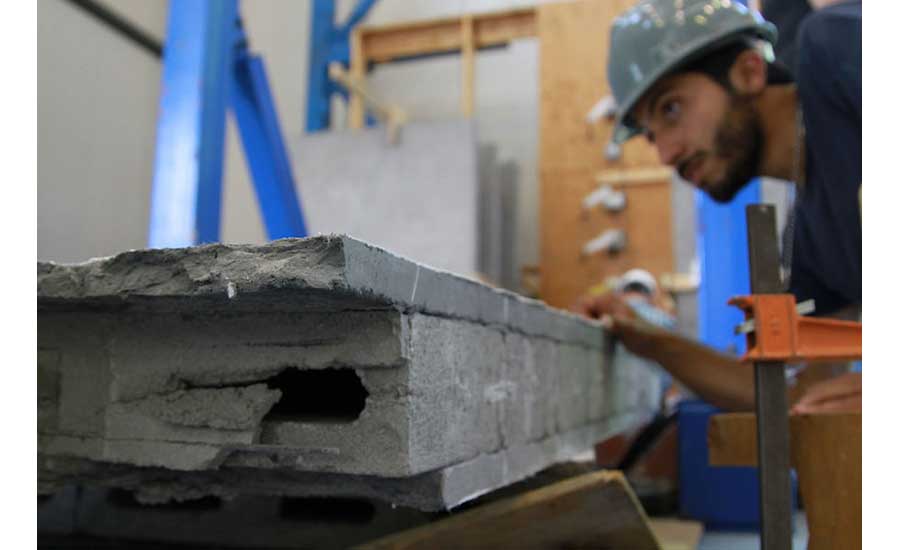With seismic resistance at the forefront of the reasoning behind the creation process, the new fiber-reinforced concrete developed at the University of British Columbia in Vancouver, B.C., undertakes its first real-world application as part of a seismic retrofit of a Vancouver elementary school.
Engineered at the molecular scale to be strong, malleable and ductile, similar to steel, UBC researchers say, the new concrete applies as a thin coating on the surface of concrete. Dubbed eco-friendly ductile cementitious composite (EDCC), the material has undergone simulation testing to as high as a 9.1 magnitude earthquake, more intense than was seen in the Tohoku, Japan, earthquake.
“We sprayed a number of walls with a 10-millimeter-thick layer of EDCC, which is sufficient to reinforce most interior walls against seismic shocks,” says Salman Soleimani-Dashtaki, a PhD candidate in the department of civil engineering at UBC. “Then we subjected them to Tohoku-level quakes and other types and intensities of earthquakes and we couldn’t break them.”
EDCC combines cement with polymer-based fibers, flyash and other industrial additives, making it highly sustainable, according to UBC civil engineering professor Nemy Banthia, who supervised the work. “By replacing nearly 70 percent of cement with flyash, an industrial byproduct, we can reduce the amount of cement used,” says Banthia.
The material comes as a solution to understanding how cracks form and how materials impact that formation of those cracks. The EDCC material performs seismically while using minimal cement, making it inexpensive and easy to replicate. Working with a team of contractors at the Dr. Annie B. Jamieson Elementary School in Vancouver, the UBC group will upgrade the walls in the retrofit as the first test. From there, expect to see a global expansion.
The research was funded by the UBC-hosted Canada-India Research Centre of Excellence IC-IMPACTS, which will make EDCC available to retrofit schools in highly seismic areas in northern India.
“This technology is gaining significant attention in India and will provide our Canadian companies a strong competitive edge in the growing global infrastructure market,” says Banthia, who also serves as IC-IMPACTS scientific director.
Other EDCC applications include resilient homes for First Nations communities, pipelines, pavements, offshore platforms, blast-resistant structures and industrial floors.
Follow Tim Newcomb on Twitter at @tdnewcomb.


Post a comment to this article
Report Abusive Comment